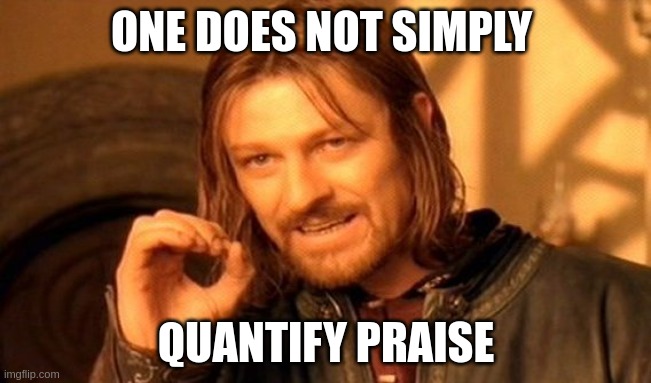Rewards System Process
The purpose of this system is to create a way to record, reward and analyze fairly the work done by contributors to the TEC, creating a manner of providing decentralized updates of the action happening in the Commons. By this system we can gather realtime acknowledgement of contributions, in a decentralized manner. We have multiple systems that are designed to reduce as much as possible the mental overhead and time commitment of quantification and also average out the subjectivity of praise in itself, by having a decentralized oracle of quantifiers. This is our current proposed process by which we will achieve the goals of this system.
Step 1 - Collect Data
The most important step is to collect the data related to the work done by TEC Contributors. This is broken down into subcategories and further into specific input streams. Data is collected continuously and submitted for Quantification on a bi-weekly schedule. The two sub-categories are Automatically Quantified and Manually Quantified. The corresponding inputs for each category are as such:
- Auto Quantified
a. Github
b. Discourse(Forum)
c. Discord Meeting Attendance (In Development)
d. Twitter (In Development) - Manually Quantified
a. Discord Praise
b. Telegram Praise
It’s important to note that in general, auto quantification is related to objective contributions and manual quantification to subjective contributions. It’s possible that some actions in Github and Discourse(Forum) for example fall under the Praise process if they have a subjective character. (i.e. we praise the content of the contribution rather than the factual action of making a contribution.
Step 2 - Quantification
We aggregate all input streams and run each through their distinct quantification paths.
Automatic Quantification
For Automatic Quantification we will be using a SourceCred instance and bot(s) that will track and quantify specified actions. The Reward Board will have the ability to establish and propose to modify the actions we value and how much they are relatively worth. These “weight” configurations will be shown in the output of Step 7, for every quant.
For each input we outline the actions that can be automatically tracked and quantified, the four main sources for automatic quantification are Github, Discourse(Forum), Discord Meeting Attendance (Alexandra?), and Twitter. A comprehensive list of the parameters for each source can be found in the Appendix at the bottom of this document.

Manual Quantification
Praise will be recorded and saved to the Praise backend by TEC tailored bots in both Telegram and Discord. The amassed praise will have to be quantified each cycle manually. Manual Quantification will be done by members of the community. We have a pool of Quantifiers that have opted in for the responsibility of quantifying praise and we will draft a group of randomly selected Quantifiers from this pool to complete this task. Quantification Periods normally will be a bi-weekly period. Quantifiers will also be rewarded for the work they do in manual quantification to incentivize participation in the system.
The UI and user flow for Quantifiers that will be built will adhere to a few important points:
-
Quantifiers will have five (5) days to asynchronously quantify their assigned praise
-
Praise will be grouped by Praise Receiver inside the UI for quantifiers. This is important to see any duplicate praise, or praise from multiple sources for the same contribution.
-
Quantifiers will have overlapping sections of praise that they will need to quantify, not the entire praise for the whole cycle. Meaning that more than 1 quantifier will evaluate each praise and the average will be taken and passed on as the final score.
-
A Fibonacci sequence will be used as the incremental factor for quantifying. To the Quantifier this will show up as simply a slider that returns a numerical value. Higher score → more valuable the contribution. The range of values go from the least relevant which is 0 to most impactful which is 144, according to this sequence:
- 0 → 1 → 1 → 2 → 3 → 5 → 8 → 13 → 21 → 34 → 55 → 89 → 144
-
Quantifiers will reference the Rules of Praise and Quantification and Quantifier Onboarding posts which will help them navigate the quantification process.
Both streams will merge once they have been quantified in their respective manners and passed onto the next step.
Step 3 - Analysis
At the end of the 5 day window for quantifying praise a call will be held for the Quantifiers who wish to review the entire praise data to collaboratively analyze and suggest future considerations for other quantifiers. We’ll also be using the [RAD dashboard]GitHub - CommonsBuild/tec-rewards to analyze and cross-reference data. These Review sessions will show us if there are any gaps in education around quantfying or dishing praise and also identify any problematic or errant quantifiers, bringing us cultural insights and help us find problems and strengths in the early stages. You can find the agenda and notes from the review sessions here.
Step 4 - Calculate Rewards
Once we have the combined praise data from all streams we’ll use the associated quantification values to calculate the actual token amounts that will be distributed to each eligible recipient. The initial distirbution relationship between sourceCred and Praise is yet to be determined as well as the amount of funds distributed for every round. Keep on the lookout for a forthcoming post from the Reward Board which will detail all relevant distribution parameters.
Step 5 - Final Approval
The final token distribution will then be voted by the Reward Board, which also holds the Reward System Funds. This DAO will be stewarded by a board of 3-7 trusted members (Reward Board) who have been vested with the responsibility of inspecting the final distribution and pushing the button to release funds. They will need to check for any oversights or collusion between Quantifiers. The Vote for releasing rewards DAO funds must meet a Quorum of 41%(at least 3 of 7 must vote) and have minimum 81% Support (2 members voting No can block the proposal).
Choosing the Reward Board
We will have a formal nomination process for the initial Reward Board with up to a maximum of 7 seats. A Reward Board member who has not participated for 3 consecutive rounds will be asked to give up their seat.
Powers of the Reward Board
This DAO will have extraordinary powers over the Rewards System, the greater community however will act as the arbiter in case of metagovernance and distribution modifications. We will use Snapshot for these instances. An exhaustive list of this board’s powers are as follows:
- Change the weight configurations in SourceCred
- Change the allocation percentage for each round of rewards.
- Modify the distribution ratio between SourceCred and Praise
- Mint tokens for new board members, burn tokens for outgoing members
- Modify the distribution percentages of the three entities outlined in Step 6
…But Who Watches the Watchers?
The community will have several instances to act as the backstop in instances of collusion or poor judgement from board members. We define checkpoints for each power numbered in the previous sub-section:
- Action 1 will be output in Step 7 allowing the community to see the weights used and flag issues.
- Actions 2-5 will require community votes to approve proposals made by the board.

Step 6 - Distribution
Reward Allocations are valued in DAI, but paid out in TEC. We want to inject our contributors directly into our token economy and we’ll use our own Augmented Bonding Curve to achieve that. The ABC will convert the received funds from the TEC treasury, swapping wxDAI to TEC. When the funds have been released by the Reward Board they will be paid out to three entities - the Reward Board, Quantifiers, and Contributors. The distribution will have already been set by the Reward Board and ratified by the greater community at the initialization of the Rewards System.
To aid in visualization we can use this imagined example:
The allocation percentage is 1% of the Common Pool for each rewards round
If the Common Pool has 600,000 wxDAI , we distribute 6000 wxDAI, if the price of TEC is 2 wxDAI then this comes to 3000 TEC to distribute for this round
The Reward Board establishes an allocation distribution of 90% to contributors, 7% to Quantifiers, 3% to the Reward Board. Allocations is set to 75% Praise, 25% SourceCred.
From these amounts, assuming no modifications were made by the Rewards DAO in Step 5, the token distribution amounts would break down as follows:
- Contributors receive 2700 TEC
- 675 for SourceCred
- 2025 for Praise
- Or averaged out across 50 unique contributors renders 54 TEC each
- Quantifiers receives 210 TEC
- If there’s 10 Quantifiers that’s 21 TEC each.
- Reward Board receives 90 TEC
- If there’s 7 board members that’s 12.85 TEC each
Once the amounts are calculated and approved by the DAO vote they are distributed using the Transactions App on the Reward Board Aragon DAO.
Step 7 - Iterate and Improve
After the data analysis of each round we integrate insights and inform the parameters of sourcecred and the reach of praise.
A forum post will be generated for each quant showing who received how much funds and the SourceCred weight configurations. By this process we invite analysis and discussions and empower transparency.
Data points and more metrics will be added in Post MVP that will allow robust analytics of praise.
*A note on record-keeping: Ultimately the blockchain is the final source of truth for observing distributions. However, a ledger of final praise distributions will be maintained and made publicly available, this will be the responsibility of the Reward Board.
Quantification Parameters Appendix
*This list is subject to change as we discover new technical possibilities and limitations
| Data Source | Inputs | Parameters and Actions to Weigh |
SourceCred |
Discourse |
|
| GitHub |
|
|
|
||
| Discord Meeting Attendance |
|
|
Praise |
Discord |
|
| Telegram |
|
|
Rewards Distribution |
Reward Board |
|
| Quantifiers |
|
|
| Contributors |
|
|
 Are some of these people Trusted seeds?
Are some of these people Trusted seeds? )
) I was hoping the pooling was huge! It’s so good for people to be witnessing all the good happening around them. I dig that the bar to entry is low.
I was hoping the pooling was huge! It’s so good for people to be witnessing all the good happening around them. I dig that the bar to entry is low.